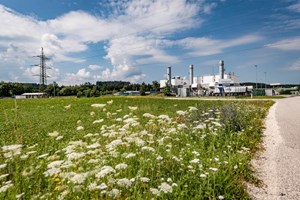News
INNIO Group to deliver H2 technology to power RAG Austria AG’s cogeneration plant
INNIO announced that RAG Austria AG (RAG) has selected INNIO Group’s (INNIO) Jenbacher innovative H2 engine technology to power its H2 cogeneration plant in Gampern, Upper Austria. The combined heat and power plant (CHP) will generate green power and heat. With this innovative flagship project, the two companies are laying the foundations for greater security of supply in the use of green energy.
As part of the commissioning of the world’s first 100% H2 storage facility in a porous underground reservoir – RAG’s “Underground Sun Storage”, up to 4.2 gigawatt hours of electricity produced in summer can be kept ready for winter in the form of green H2.
Commissioning of the highly efficient, flexible Jenbacher H2 CHP plant in the 1-MW range is scheduled for Spring 2024. In winter, electricity can then be generated on-demand from the green energy reserves, and the waste heat can be used for heating purposes. In this trailblazing project, INNIO and RAG are augmenting the entire value chain, focusing on seamless coordination between the generation, conversion, storage and – most notably – supply of green energy.
“Our H2 technology is foundational for energy security in the age of volatile renewables. We are already helping businesses and communities around the world to become carbon-neutral,” said Dr. Olaf Berlien, President and CEO of INNIO Group. “H2-ready decentralized energy solutions, ideally in the form of highly efficient CHP plants, make our energy supply future-proof.”
“In Gampern, Upper Austria, we are demonstrating what can and must be done to manage the energy transition by securing a reliable supply of green energy throughout the year,” explained Markus Mitteregger, CEO of RAG Austria AG. He goes on to say that “The H2 cogeneration plant is a key building block for the entire H2 ramp-up, because flexible, quick-start CHP plants can not only generate electricity as needed, but also produce the heat that is so important in winter. This significantly improves efficiency while also facilitating the heating transition.”


